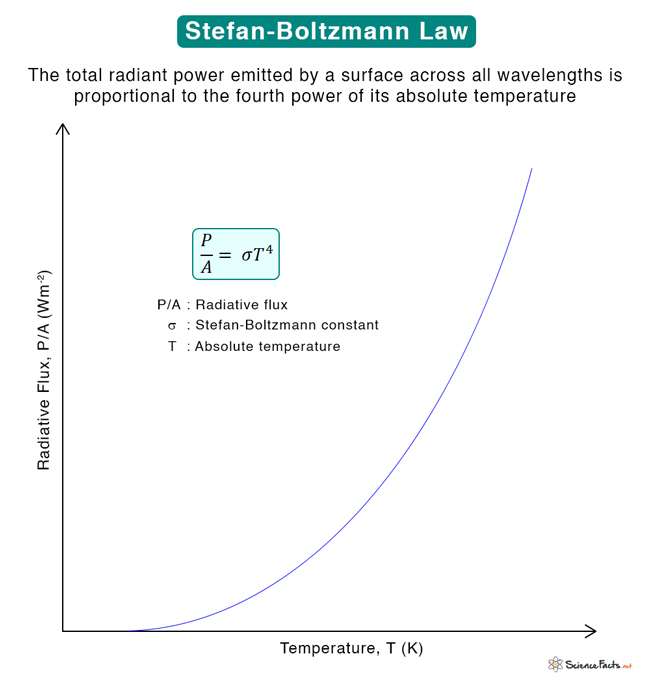Stefan-Boltzman law is named after Austrian physicists Josef Stefan and Ludwig Boltzmann. Stefan formulated the law in 1877, and Boltzmann derived it in 1884.
Formula
Application
Where s is called the Stefan-Boltzmann constant. It has the following expression: Where kB: Boltzmann’s constant h: Planck’s constant c: Speed of light Plugging in the values of kB, h, and c, the Stefan-Boltzmann constant comes out to be 5.67 x 10-8 W · m-2 ·K-4. For objects that are not black bodies, the Stefan-Boltzmann equation modifies to Where e is the emissivity of the object. It takes fractional values between 0 and 1. It is 1 for a black body. Therefore, the radiation emitted from an object that is not a black body is less than that emitted by a black body at the same temperature. Suppose the object radiates energy to its cooler surrounding, which is at a temperature TC. The radiation equation modifies to From the above equations, it is clear that the total radiative power increases as the temperature increases, making heated objects glow bright. Stefan-Boltzmann’s law can be derived using Planck’s radiation formula. Planck’s equation is integrated over wavelength to get the radiative power.
